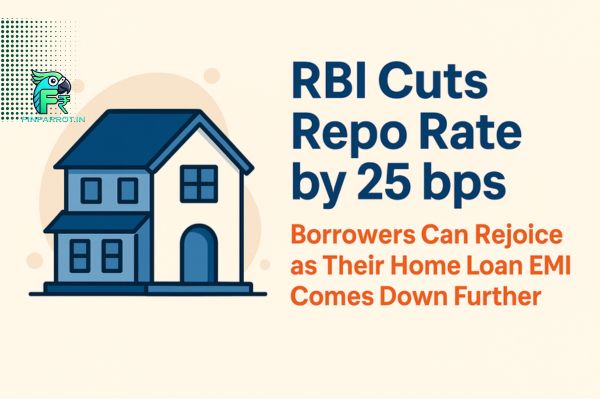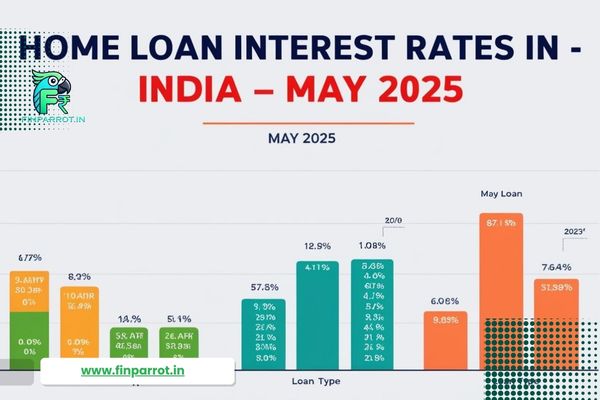Introduction
Taking a loan in India involves more than just the principal amount; it’s also about navigating the various fees that accompany it. Many borrowers find themselves surprised by these additional charges, which can significantly impact the overall cost of borrowing. To help you make informed decisions, we’ve compiled a straightforward guide to 30 Hidden Loan Charges and How to Avoid Them. We’ll explain each fee in clear, understandable terms and provide practical advice on how to avoid them potentially. Consider this your resource for demystifying loan costs and ensuring a more transparent borrowing experience.
Your CIBIL score affects loan approvals and charges. Don’t fall for these 7 CIBIL score myths.
30 Hidden Loan Charges and How to Avoid Them
5 Application and Processing Fees
These fees are charged during the application stage and while processing your loan.
- Processing Fee
What it is: A fee to cover the administrative costs involved in evaluating and processing your loan application.
How to avoid: Compare fee structures among different lenders and negotiate or choose those with lower processing costs. - Service and System Fee Charge
What it is: A fee for administrative and system-related costs during loan processing.
How to avoid: Compare lenders’ fee schedules upfront to find the lowest costs. - Document Verification Charge
What it is: A fee for verifying the authenticity and completeness of your loan application documents.
How to avoid: Prepare and organize all required documents correctly and ensure they are properly certified before applying. - Credit Report Charge
What it is: A fee charged for obtaining and reviewing your credit report from credit bureaus during the evaluation process.
How to avoid: Check your credit report in advance for errors and ask if the fee can be waived or reduced. - Manual Rejection Charge
What it is: A fee for manually rejecting a loan application due to incomplete or incorrect documentation.
How to avoid: Ensure your application is complete and accurate to prevent such rejections.
4 Account Management Fees
- These fees relate to ongoing account services and documentation.
Loan Statement Charge
What it is: A fee for generating and sending periodic loan statements.
How to avoid: Opt for digital statements to avoid these recurring charges. - Statement of Account Charge
What it is: A fee for obtaining a detailed summary of your loan account.
How to avoid: Request combined statements to minimize unnecessary duplicate fees. - Receipt Penalty Charge
What it is: A penalty for delays or errors in issuing payment receipts.
How to avoid: Keep accurate records and promptly confirm all payments. - Duplicate No Objection Certificate Charge
What it is: A fee for issuing a duplicate No Objection Certificate (NOC).
How to avoid: Keep your original NOC safe to avoid incurring duplicate charges.
5 Payment-Related Fees
These fees are directly linked to payment processing and transactions.
- Automated Clearing House Failure Charge
What it is: A penalty for failed ACH transactions due to insufficient funds.
How to avoid: Ensure you maintain sufficient funds in your account to prevent payment failures. - Pre-Monthly Collection Charge
What it is: A fee for collecting monthly payments in advance.
How to avoid: Choose a lender that doesn’t impose this fee or negotiate more flexible payment terms. - Cash Bounce Charge
What it is: A penalty for bounced cheques due to insufficient funds.
How to avoid: Always verify your account balance before issuing cheques. - Cheque Bounce Charge
What it is: A penalty for any bounced payment, including online transactions.
How to avoid: Set up payment alerts and ensure sufficient funds to prevent payment failures. - Penalty Charge
What it is: A generic fee for late payments or non-compliance with loan terms.
How to avoid: Adhere strictly to your agreed payment schedule.
5 Loan Modification/Closure Fees
These fees are charged if you modify, close, or restructure your loan.
- Foreclosure or Prepayment Fee
What it is: A fee charged if you decide to pay off your loan early or in the event of foreclosure.
How to avoid: Review the loan agreement carefully and negotiate lower prepayment penalties if early repayment is a possibility. - Re-agreement Charge
What it is: A fee for modifying or re-signing the loan agreement.
How to avoid: Double-check all loan details before signing to avoid the need for subsequent modifications. - Loan Restructuring Charge
What it is: A fee for modifying your loan terms after the agreement has been finalized.
How to avoid: Maintain open communication with your lender to avoid unnecessary restructuring fees. - Cancellation Charge
What it is: A fee imposed if you cancel the loan after processing has begun.
How to avoid: Understand the cancellation policy thoroughly before signing the loan agreement. - Swap or Exchange Charge
What it is: A fee for swapping or exchanging elements of the loan, such as changing features or terms.
How to avoid: Understand your loan’s exchange policies and negotiate terms to avoid unexpected costs.
2 Service-Related Fees
These fees are linked to additional services provided by the lender.
- Buy-Place-Install Service Charge
What it is: A fee for services related to buying, placing, and installing assets.
How to avoid: Clarify all related service charges before taking the loan and negotiate for transparency. - Executive Visit Charge
What it is: A fee for personalized visits by bank executives.
How to avoid: Use branch visits or online banking services to minimize this fee.
2 Insurance-Related Fees
These fees are associated with insurance products linked to your loan.
- EMI Insurance Charge
What it is: A premium for insuring your Equated Monthly Installments (EMIs).
How to avoid: Verify whether you already have sufficient coverage before paying for additional EMI insurance. - Insurance Difference Charge
What it is: A charge for discrepancies between initially quoted and actual insurance premiums.
How to avoid: Secure a fixed premium rate in writing before committing to the loan.
7 Miscellaneous Fees
This category covers fees that don’t neatly fit into the other groups but can still impact your loan costs.
- Other General Charges
What it is: Miscellaneous fees for small, unspecified expenses that may add up.
How to avoid: Ask for a detailed breakdown of “other charges” to identify and dispute unnecessary fees. - Collateral Documentation Charge
What it is: A fee for preparing, verifying, and processing the paperwork related to the collateral pledged for your loan.
How to avoid: Ensure your collateral documents are complete and up-to-date before applying, and negotiate with your lender regarding this fee. - Legal Charge
What it is: A fee covering legal expenses related to drafting or modifying your loan agreement.
How to avoid: Consult a financial expert to negotiate legal costs and carefully review all legal documents. - One-Time Settlement Waiver
What it is: A waiver of fees when settling your loan early.
How to avoid: Negotiate for this waiver during initial loan discussions if early repayment is likely. - Interest Refund Eligibility Clause
What it is: Terms that determine if you’re eligible for a refund on interest paid under certain conditions.
How to avoid: Read the fine print carefully and inquire about eligibility to ensure you can maximize potential savings. - Foreign Currency Charge
What it is: A fee for converting and processing foreign currencies during international transactions.
How to avoid: Opt for loans in your local currency whenever possible to avoid these conversion fees. - Loan Sale Charge
What it is: A fee imposed when your lender sells your loan to another entity.
How to avoid: Ask about loan transfer policies before signing to avoid unexpected costs.
Students taking loans? Learn smart borrowing tips to avoid debt traps.
FAQ’s
What are the most common hidden charges in a car loan?
Common hidden charges include processing fees, documentation charges, prepayment penalties, late payment fees, mandatory insurance costs, and handling fees for loan foreclosure.
What are the common hidden charges in a personal loan?
Hidden charges may include processing fees, late payment penalties, foreclosure charges, and insurance costs. Always check the loan agreement carefully.
If you face unfair hidden loan charges, you can file a complaint Know More.
Conclusion:
While understanding 30 loan fees may seem daunting, remember that knowledge is your best tool. The most important advice we can offer is to remain proactive and inquisitive. Don’t hesitate to seek clarification on any aspect of your loan agreement that you find unclear. Comparing loan offers from multiple lenders is also essential, as it allows you to identify the most favourable terms for your financial situation. Always take the time to thoroughly review the fine print and seek professional advice when needed. By arming yourself with information and exercising due diligence, you can confidently navigate the loan process and potentially minimize unnecessary costs. We wish you success in your borrowing endeavours.
Did you know India has 4 credit bureaus? Decode your credit score to understand how it impacts loans.















